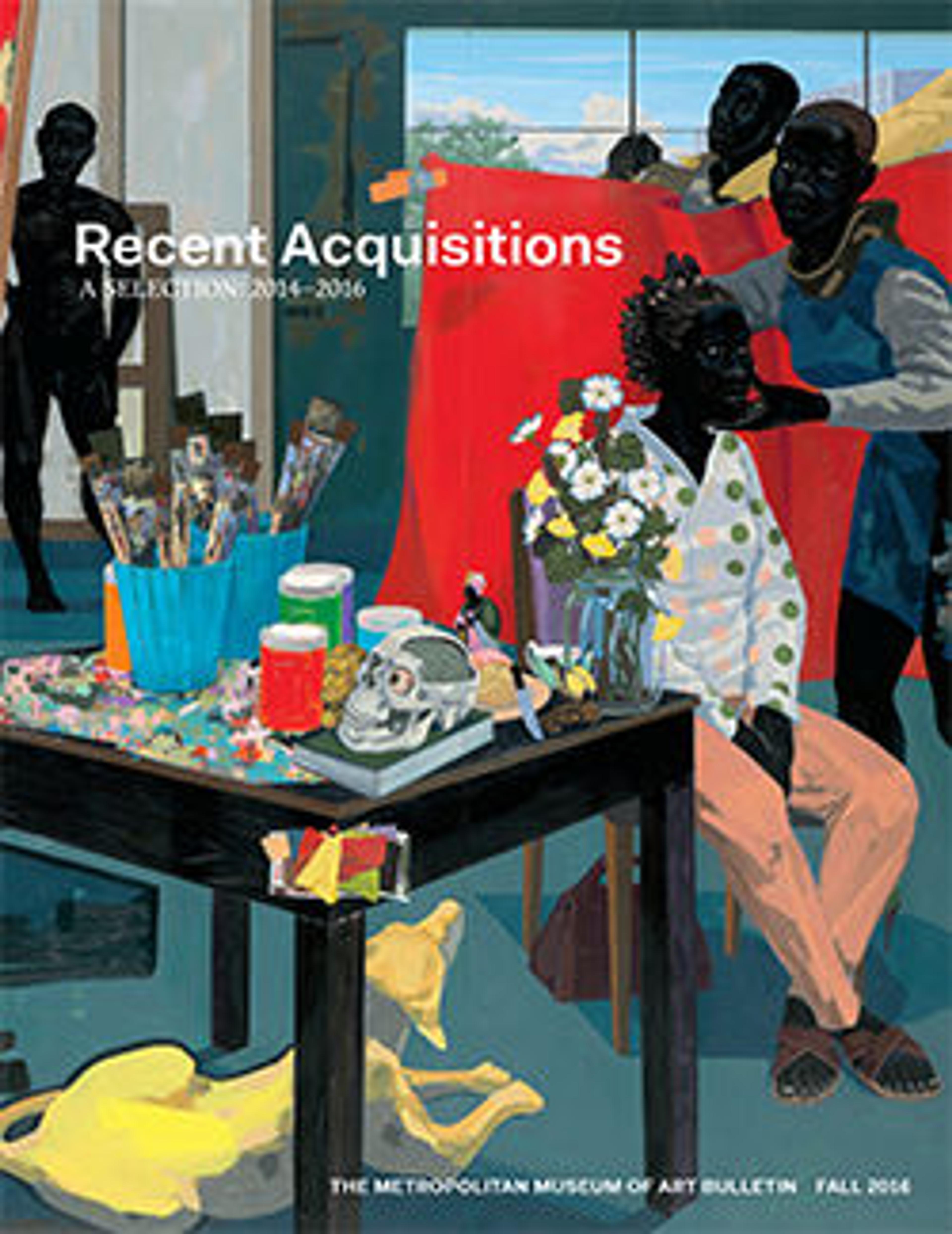Vessel with two zebu
This vessel is of particular interest for two reasons. First, it enlarges the corpus of "Intercultural Style" chlorite vessels bearing imagery derived from the Indus Valley. Second, it is attributed to Al-Rafiah, on the east coast of the island of Tarut. Here a considerable number of fragmentary examples with elaborate figural motifs have been found, perhaps originally intended for shipment to the temple repositories of Mesopotamia.
Depicted in a carved and inlaid technique are two zebus striding one behind the other in a rich landscape. The modeled bodies of the animals are starkly outlined, emerging from a flat background in a manner characteristic of "Intercultural Style" vessels. Their eyes, muzzles, horns, and humps are sharply differentiated by deep incisions and sweeping curves. The humps are not patterned as in other examples but are embellished with circular areas of inlay, like those used on other vessels to indicate the spots on leopards' coats. Here a few white stone insets survive. Inlays were also used to accentuate the animals' curved beards and floral elements in the background.
Of great interest is the treatment of the background, which is covered with geometric patterning to suggest mountains, water, and perhaps land in a "conceptual" perspective, where depth of field corresponds to height. The mountains are depicted as a series of overlapping, nested scallops, forming a pattern similar to the imbrications that sometime cover large areas of vessels of this type. Below are horizontal streams of wavy lines ending in a spiral hook, which seem to emerge behind the animals' heads from curving parallel lines that probably indicate a river. The flowers between the legs of the animals are perhaps meant to indicate the riverbank along which they walk.
Depicted in a carved and inlaid technique are two zebus striding one behind the other in a rich landscape. The modeled bodies of the animals are starkly outlined, emerging from a flat background in a manner characteristic of "Intercultural Style" vessels. Their eyes, muzzles, horns, and humps are sharply differentiated by deep incisions and sweeping curves. The humps are not patterned as in other examples but are embellished with circular areas of inlay, like those used on other vessels to indicate the spots on leopards' coats. Here a few white stone insets survive. Inlays were also used to accentuate the animals' curved beards and floral elements in the background.
Of great interest is the treatment of the background, which is covered with geometric patterning to suggest mountains, water, and perhaps land in a "conceptual" perspective, where depth of field corresponds to height. The mountains are depicted as a series of overlapping, nested scallops, forming a pattern similar to the imbrications that sometime cover large areas of vessels of this type. Below are horizontal streams of wavy lines ending in a spiral hook, which seem to emerge behind the animals' heads from curving parallel lines that probably indicate a river. The flowers between the legs of the animals are perhaps meant to indicate the riverbank along which they walk.
Artwork Details
- Title:Vessel with two zebu
- Period:Early Dynastic II-III
- Date:2600–2350 BCE
- Geography:Probably from the Persian Gulf region, Tarut island (al-Rafiah)
- Medium:Chlorite, calcite inlay
- Dimensions:4 1/2 × 2 3/4 × 2 3/4 in. (11.4 × 7 × 7 cm)
- Credit Line:Gift of Mrs. Constantine Sidamon-Eristoff, 2014
- Object Number:2014.717
- Curatorial Department: Ancient West Asian Art
More Artwork
Research Resources
The Met provides unparalleled resources for research and welcomes an international community of students and scholars. The Met's Open Access API is where creators and researchers can connect to the The Met collection. Open Access data and public domain images are available for unrestricted commercial and noncommercial use without permission or fee.
To request images under copyright and other restrictions, please use this Image Request form.
Feedback
We continue to research and examine historical and cultural context for objects in The Met collection. If you have comments or questions about this object record, please contact us using the form below. The Museum looks forward to receiving your comments.
